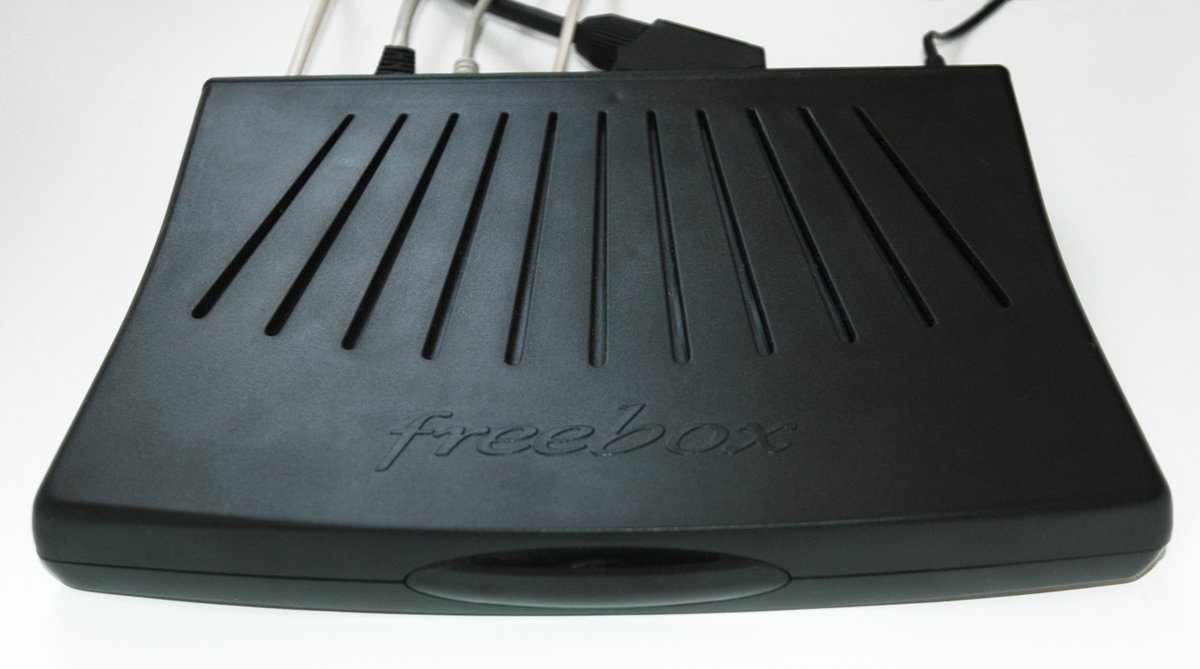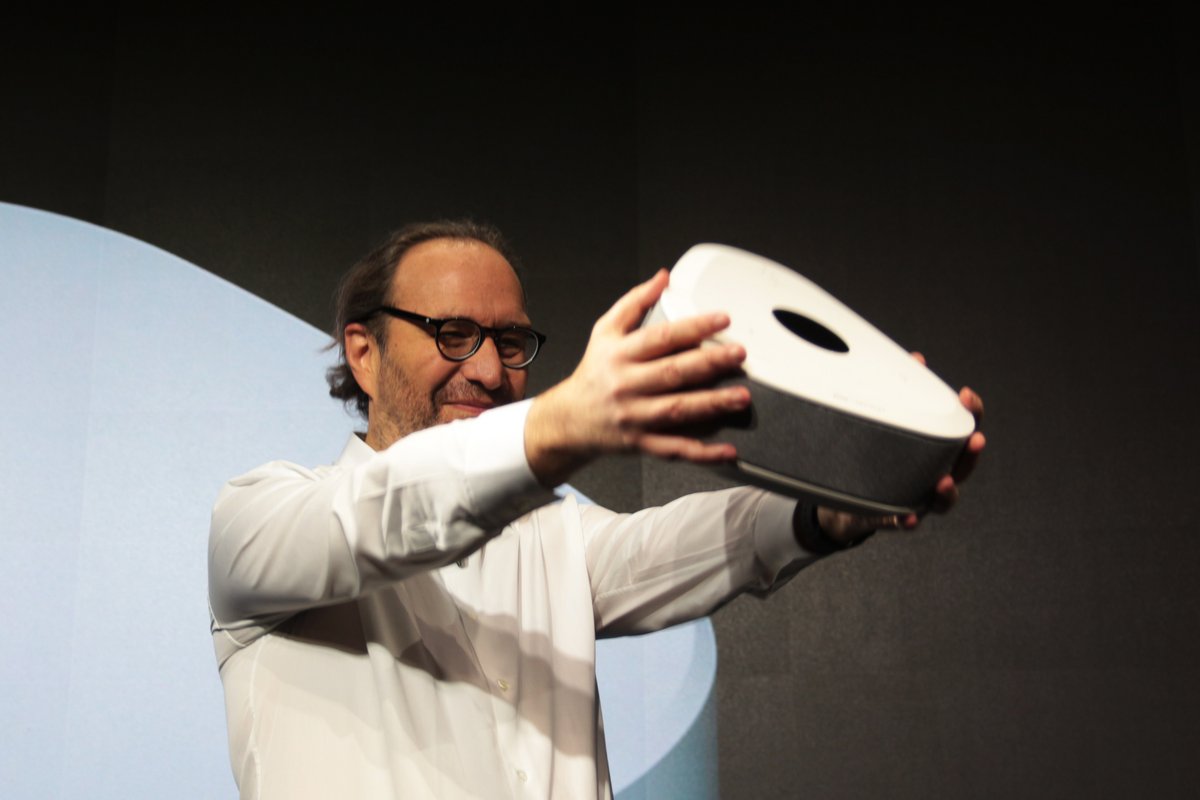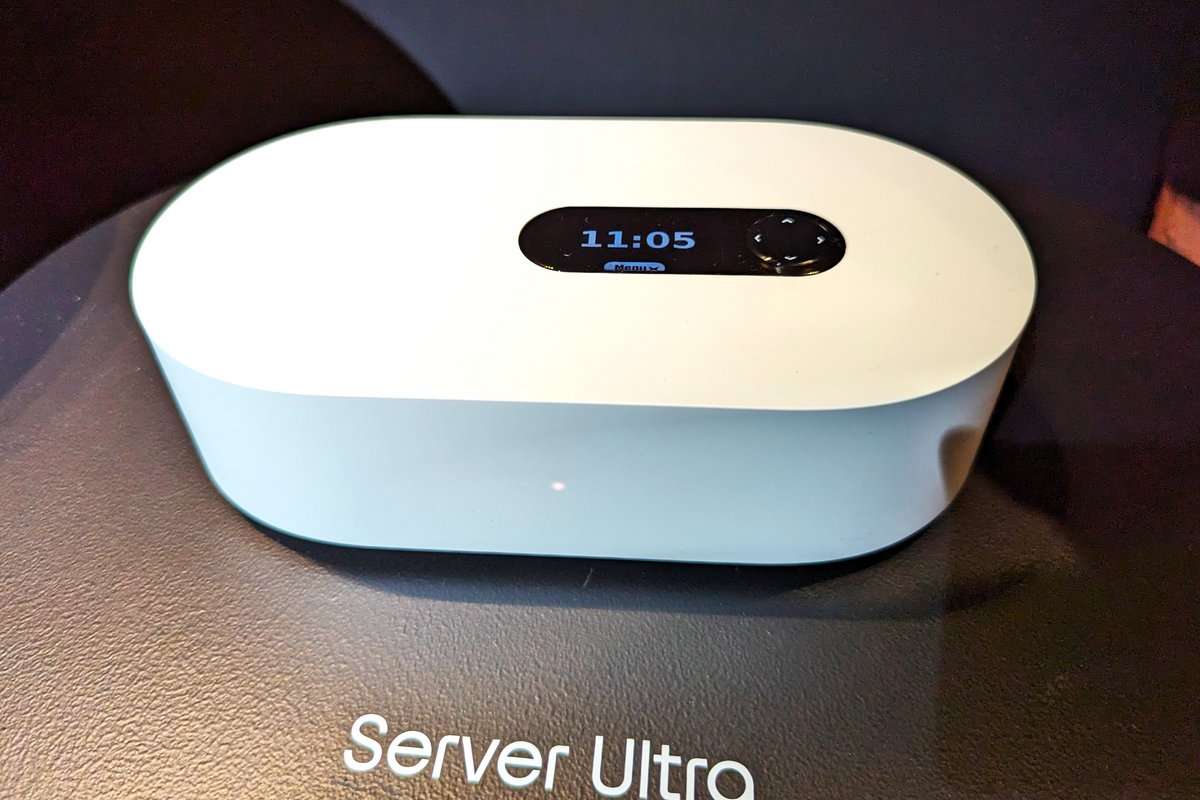Xavier Niel’s company is rather unique in the French telecoms market, as proven by the latest launch of the Freebox Ultra. A tendency to stand out that we particularly find under our televisions.
The day after the marketing of the Freebox Ultra, let’s open a nostalgic parenthesis. Since the beginning of the century, the operator who has “ all-in » puts on a show whose main star is none other than its Internet boxes. From a simple high-tech object to hide behind the family computer, the modem has become the center of entertainment and connectivity at Free, a feature that is found today in most of its competitors.
But, even today, the Freebox is a step ahead, and for good reason: innovation has been in its DNA since its very first version.
See the Freebox Ultra offer at €49.99 per month
A world first made in France
More and more people have never experienced the world of noisy 56k modems, TPS or Canal+ TV decoders, and France Telecom bills that we await with apprehension. During the 2000s, a small evolution occurred in telecoms, celebrated by Wanadoo with the launch of its first Livebox. A device that takes care of everything: telephone communications, Internet connection and even… television.
But this innovation originated in 2001, in the offices of a young Internet service provider called Free. The company’s managers and engineers are imagining a device that would provide all of these services, simultaneously, via ADSL. This is a world first, which Xavier Niel and his team will call “ box “. And even more precisely: Freebox.
It was at the end of 2002, with the launch of a new ADSL offer more attractive than those of the competition, that Free released the first version of its device. However, like the service provided by Free, the Freebox V1 was not quite ready, in particular because of a power supply with an unfortunate tendency to burn out. This problem was resolved a few months later with the following version which also had a fairly short career.
Indeed, Free has constantly sought to improve its formula. From February 2004, V3 offers Wi-Fi connectivity, but also a radically new design. The device had to be a central element in the living room of the operator’s many subscribers, so we gave it more curved and aesthetic shapes. The different iterations of V4 will follow the same formula, but will bring ADSL 2+, while experimenting with access to certain television channels in HD.

A revolution on the horizon
The third generation of Freebox marks an important turning point. While previous versions offered an all-in-one solution, we now find ourselves with two boxes: one managing the network, the other multimedia. This new configuration accompanies the generalization of HD on the TV side with the Freebox HD, as well as the arrival of fiber in 2008 with the Freebox Ô.
Free even includes a 40 GB hard drive to record TV programs, even remotely, as well as a new remote control which allows the operator to offer a video game service. This generation will have a long career, since it will still be used in 2013 with the Freebox Crystal, intended for subscribers in non-unbundled areas and spearheading Free’s entry-level offers.
However, the operator established itself in the 2010s with a now extremely famous Freebox Revolution. Indeed, the list of new features is quite impressive: Blu-ray player, 250 GB hard drive accompanied by NAS capabilities, radio remote control packed with sensors, Intel processor for multimedia, internet speed up to 1 Gbit/s ( in theory)…
Xavier Niel pulls out all the stops. For the occasion, we called on Philippe Starck to draw the contours of the two devices. We are not talking about just anyone, since this is the man who, among other things, designed the Venus, Steve Jobs’ yacht. The class.
In 2015, Free transformed the trial and announced its Freebox Mini 4K, which lost the Blu-ray player and the hard drive to be smaller, but which still gained performance in certain aspects, notably by adopting HDMI 2.0 ports . Above all, it is powered by Android TVwhich is taking its very first steps outside of Google-made devices.
Always more, and maybe even a little too much?
We will have to wait until 2018 to see a new generation of Freebox. In December, the operator announced the One, a return to the all-in-one box which manages both multimedia and Internet connectivity. The device is primarily intended for Free’s entry-level offerings, and only serves as an appetizer for the real star of the moment: the Delta.
Theoretical speeds up to 8 Gbit/s, 1 TB hard drive, NAS capacities up to 21 TB, home automation functions and integration of a 4G LTE chip. Free offers us an impressive server box, accompanied by a player box which is just as impressive, if not more so. Designed by Jasper Morrison, it has 4K HDR, comes with Netflix Essential and Prime Video at no extra cost, and is equipped with an audio system from Devialet. The device can be used as a connected speaker, and to top it off, it can be controlled using a small “ OK Freebox “.


However, beyond the high price of Free’s high-end offering, we are in the presence of a device that perhaps does a little too much. Did we really need such 5.1 audio capability integrated into the player? At the time, the editorial staff of Clubic was a little doubtful, wondering: “ Where did the “He’s Free, he’s got it all figured out” slot go! Who made the company take off? » We then wonder if the innovation has not taken a detrimental turn for the brand, which might be trying to fly a little too high.
Especially since everything is not perfect. The operator remained attached to Freebox OS rather than repeating the experience Android TV, which will limit the number of applications available to subscribers. Finally, if Free does include Netflix in its package, we are dealing with the SD offer of the American service. Too bad for a device with such capabilities.
Fortunately, Free will implement its Delta S offer, which will allow subscribers to benefit from a quality server without having to purchase the expensive player that normally goes with it. Better yet, the very good equipment of the Freebox Mini 4K and Revolution can replace the latter.
New decade, new challenges?
In 2020, the Freebox One gives way to the Freebox Pop. Divided into two devices, the beast has its place in the 2020s, displaying a certain sobriety: no Wi-Fi 6 upon release, no integrated hard drive and no 4G. There is even an emphasis on controlling the carbon footprint and on a more minimalist, less flashy design.


The Pop reader, for his part, abandons the pomp of his predecessors; So no more sophisticated speakers or Blu-ray player. However, the performance is there and we even get 4K HDR compatibility, Dolby Vision And Dolby Atmoswhile finally finding Android OS. The device will finally be offered instead of the Devialet player to Freebox Delta subscribers, foreshadowing its retirement in the summer of 2023.
The Freebox Pop is still part of the Free catalog, alongside the indestructible Freebox Revolution. The Pop player even comes with the new Freebox Ultra, announced this Tuesday, January 30. The latter has the same aesthetic as its little sister, while being longer and more powerful, with speeds of up to 8 Gbit/s symmetrical. This is a world first for an operator, just like the announcement of Wi-Fi 7, finally available but still limited to rare compatible devices.


Here again, no possibility of installing a NAS with several hard drives (we will make do with an SSD), no integrated alarms, no obligatory TV box. Free wants to leave the choice of equipment to its subscribers, a flexibility more in line with the environmental issues of the decade. The operator’s disruption is no longer so much at the level of equipment, but rather on the side of the services provided in a unique and high-end offer which responds to a very current problem: the proliferation of SVOD offers.
It remains to be seen what the impact will be on future Freeboxes, but also on the competition, which has generally benefited from the wake of the Free ship, the icebreaker of a constantly changing telecoms sector.


10